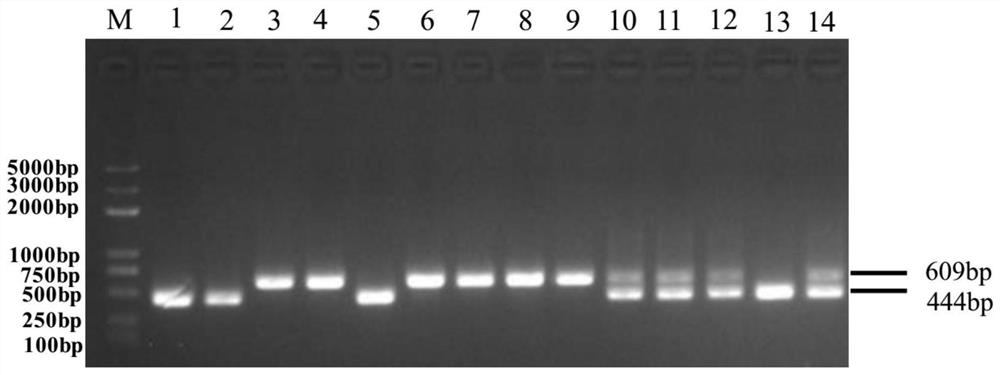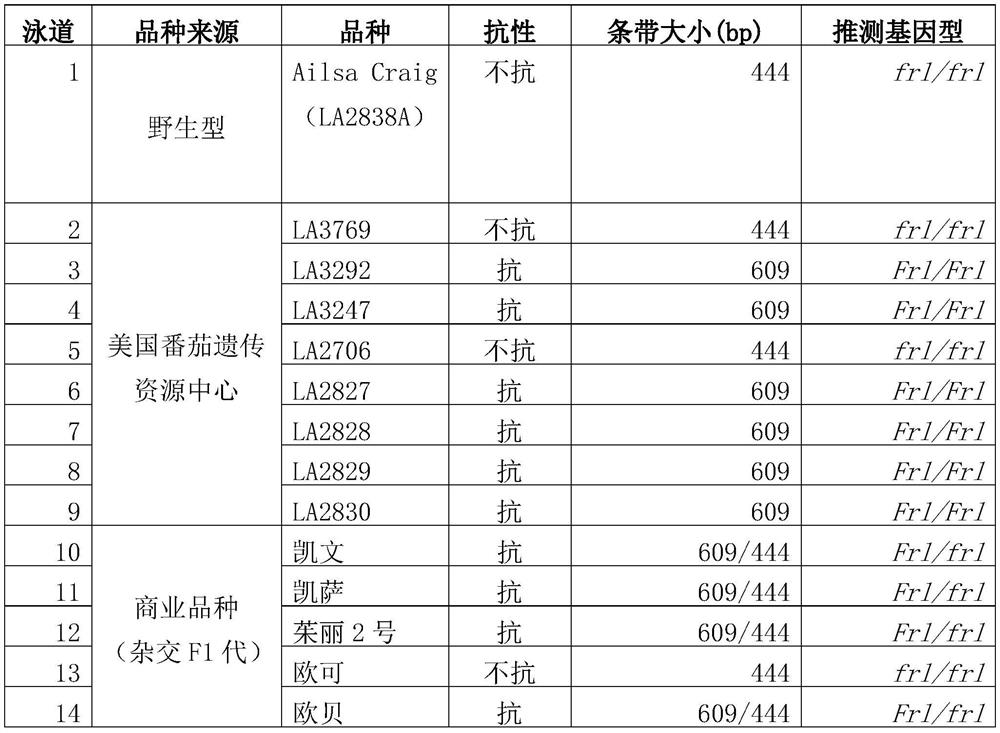Molecular marker closely linked with tomato neck and root rot resistant gene Frl, and application of molecular marker
A technology for tomato and rot root, which is applied in the determination/inspection of microorganisms, biochemical equipment and methods, etc., can solve the problems of insufficient accurate identification of material resistance and cumbersome process.
- Summary
- Abstract
- Description
- Claims
- Application Information
AI Technical Summary
Problems solved by technology
Method used
Image
Examples
Embodiment 1
[0087] Example 1. The acquisition of molecular markers and the establishment of a method for identifying tomato neck rot and root rot resistance
[0088] 1. Obtaining relevant fragments of molecular markers
[0089] After comparing the tomato varieties containing the Frl locus of tomato neck root rot and the tomato varieties not containing the Frl locus of tomato neck root rot, the tomato varieties containing the Frl locus of tomato neck root rot There is a 165bp large fragment insertion in the intergenic region of the Frl gene in the genome of the tomato variety with root rot disease Frl locus (within the interval of 4.2-5.1Mb on chromosome 9 of tomato).
[0090] After sequencing, the nucleotide sequence of the 165bp large fragment is sequence 3 in the sequence listing.
[0091] Therefore, it is possible to judge whether the tomato to be tested is resistant to tomato neck rot and root rot by identifying whether the positioning interval of the Frl gene of the tomato variety t...
Embodiment 2
[0113] Example 2, the application of molecular marker-related fragments or primers in identifying whether the tomato to be tested is a tomato resistant to neck rot and root rot
[0114] 1. Detect whether the tomato under test is resistant to tomato neck rot and root rot
[0115] 1. Extract the genomic DNA of the tomato to be tested
[0116] Genomic DNA from the leaves of tomato resistant homozygous inbred lines and commercial varieties shown in Table 1 was extracted using a plant DNA rapid extraction kit to obtain the genomic DNA of each tomato variety.
[0117] The resistance of tomato resistance-susceptible homozygous inbred lines and commercial varieties shown in Table 1 is shown in column 4 of Table 1, which is known resistance.
[0118] 2. PCR amplification
[0119] Using the genomic DNA of each tomato variety as a template, PCR amplification was performed using the primers 1 and 2 of the PCR-based molecular markers designed in the above 1 to obtain the PCR amplificatio...
PUM
 Login to View More
Login to View More Abstract
Description
Claims
Application Information
 Login to View More
Login to View More - R&D
- Intellectual Property
- Life Sciences
- Materials
- Tech Scout
- Unparalleled Data Quality
- Higher Quality Content
- 60% Fewer Hallucinations
Browse by: Latest US Patents, China's latest patents, Technical Efficacy Thesaurus, Application Domain, Technology Topic, Popular Technical Reports.
© 2025 PatSnap. All rights reserved.Legal|Privacy policy|Modern Slavery Act Transparency Statement|Sitemap|About US| Contact US: help@patsnap.com



